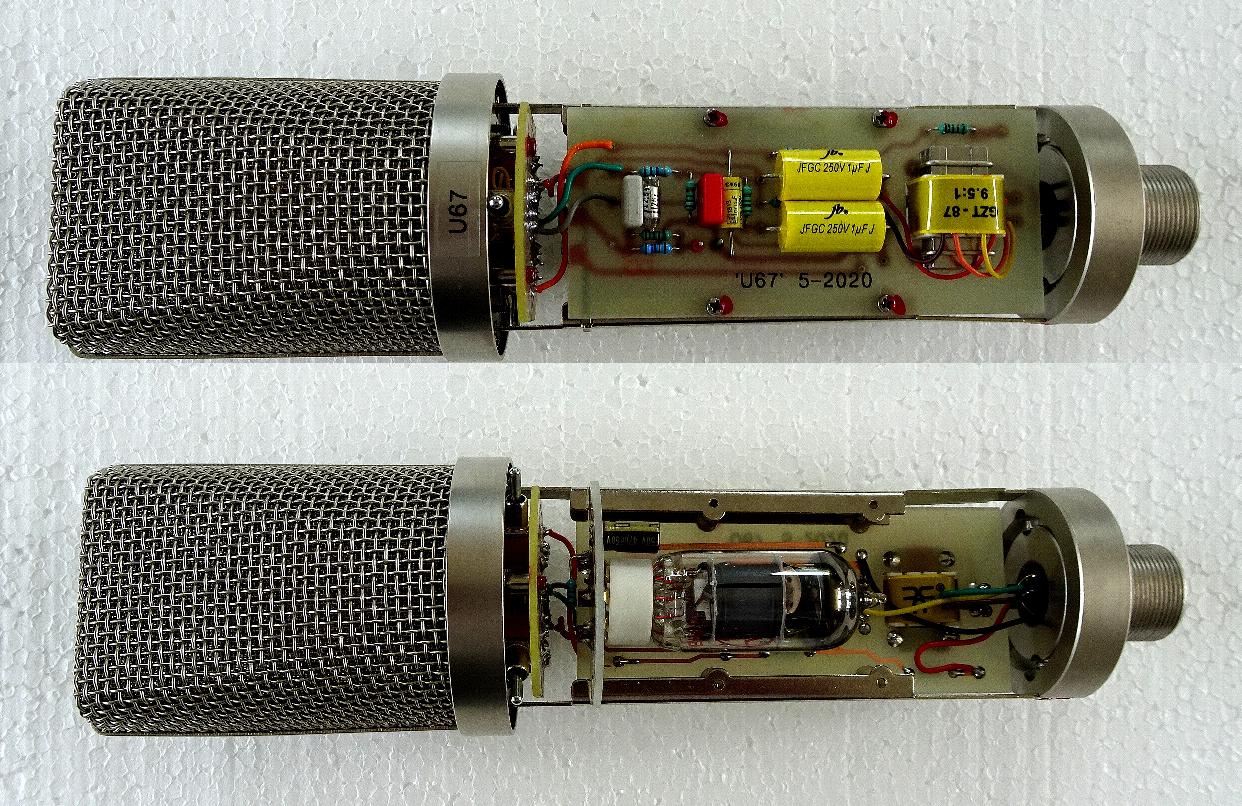RuudNL
Well-known member
Just for fun, I recently put together a "U67"-ish microphone.
It is a kind of mix between a U67 and a U87.
The microphone works as expected, sounds good and I don't hear any difference between this microphone and a U87ai.
Measured self noise is 2 dB higher than a U87ai. Not too bad, but maybe a better EF86/EF806 could improve this.
I used an original Neumann capsule that I had as a spare.
The microphone is powered from an existing tube power supply, delivering +120 V for HT.
De-emphasis is through feedback from the output. (15 KHz is 5.5 dB down referred to 1 KHz.)
For those who are interested: the schematic is in the attachment.
It is a kind of mix between a U67 and a U87.
The microphone works as expected, sounds good and I don't hear any difference between this microphone and a U87ai.
Measured self noise is 2 dB higher than a U87ai. Not too bad, but maybe a better EF86/EF806 could improve this.
I used an original Neumann capsule that I had as a spare.
The microphone is powered from an existing tube power supply, delivering +120 V for HT.
De-emphasis is through feedback from the output. (15 KHz is 5.5 dB down referred to 1 KHz.)
For those who are interested: the schematic is in the attachment.



